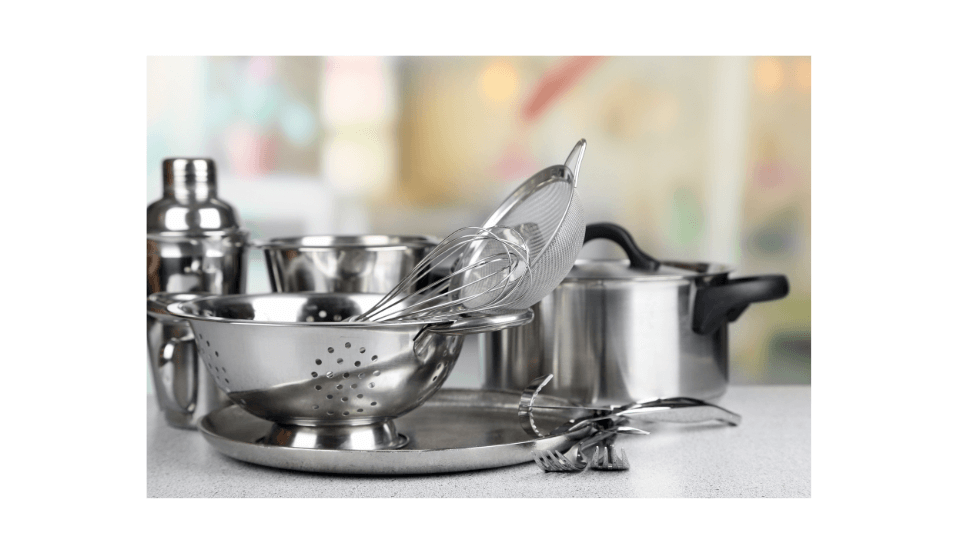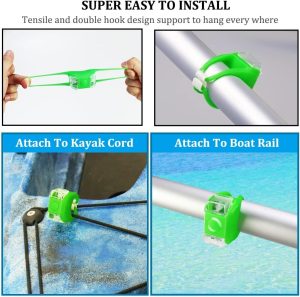Contents
Both novice and experienced chefs must carefully select their cookware. Understanding the material properties of ceramic and stainless cookware, their performance, health implications and suitability for various cooking styles is important when choosing between them. This article examines all of these factors in depth, providing a detailed analysis to help you make a decision.
Material composition and manufacturing
Ceramic Cookware
Ceramic cookware is usually made of clay that has been heated to harden it. Modern ceramic cookware may have a metal core covered with a ceramic coating. Traditional ceramic cookware has an entirely clay base. This coating is made of inorganic minerals, and it is free from toxic chemical such as PTFE or PFOA. It is a favorite among health-conscious consumers.
Stainless Steel cookware:
The alloy stainless steel is primarily composed of iron, carbon and chromium. This last element provides corrosion resistance. To improve durability and heat dispersion, high-quality stainless steel cooking utensils are often infused with other metals such as nickel or molybdenum. After forming the steel to the desired shape, it is polished and finished for a durable, sleek surface.
Heat Retention and Conductivity
Ceramic Cookware
Ceramic cookware has a reputation for excellent heat retention. Ceramic cookware maintains its temperature well, making it ideal for dishes that need constant heat and slow cooking. Ceramic is slower than metals to heat, and this can have an impact on cooking speed.
Stainless Steel cookware:
The heat conductivity of stainless steel is superior, especially when it’s combined with other metals such as aluminum or copper, in a multi-layered construction. It also ensures an even distribution of heat across the surface, which reduces hot spots and improves cooking efficiency. The stainless steel reacts quickly to temperature changes and heats up rapidly. This makes it versatile when used for different cooking techniques.
Durability and longevity
Ceramic Cookware
Ceramic cookware, while durable, is more susceptible to cracking and chipping than stainless steel. The ceramic core or coating can be damaged by sudden temperature changes or dropping the cookware. Ceramic cookware that is properly cared for can last many years.
Stainless Steel cookware:
Stainless steel has a high level of durability and is resistant to corrosion and stains. It is durable and can withstand heat. High-quality stainless cookware is durable and can be passed on from generation to generation.
The Performance of Cooking and Versatility
Ceramic Cookware
Ceramic cookware is excellent for slow cooking and baking. The ability to retain heat is perfect for dishes such as stews, casseroles and roasted veggies. Ceramic surfaces are naturally non-stick and reduce the need to use excessive oil or fats. They are not recommended for high-heat methods of cooking, such as searing and stir-frying.
Stainless Steel cookware:
Cookware made of stainless steel is very versatile and can be used for many different cooking methods, including sautéing, frying or boiling. It is able to handle high temperatures and is therefore ideal for searing or browning meats. Stainless steel is non-reactive, so it will not affect the color or taste of acidic food.
Health and Safety
Ceramic Cookware
Due to its nontoxic and nonreactive nature, ceramic cookware is considered a safer choice. Even when cooking with acidic ingredients, it does not leach chemical into the food. Ceramic coatings today are free of harmful substances such as PFOA and PTFE.
Stainless Steel cookware:
It is also a good option because it doesn’t react with the food. Low-quality stainless may contain more nickel or other metals, which can leach in to food. By choosing high-quality stainless steel that is food-grade, you can reduce these worries. Stainless steel cookware requires oil or fat to prevent it from sticking. This can have a negative impact on the nutritional value of certain dishes.
Maintenance and cleaning
Ceramic Cookware
Due to its nonstick properties, ceramic cookware is easy to clean. The majority of ceramics can be cleaned using a mild detergent and soft sponge. To avoid damaging the ceramic surface, it is best to avoid using harsh abrasives. Although some ceramic cookware can be washed in the dishwasher, hand washing is advised to prolong its life.
Stainless Steel cookware:
It takes more effort to keep stainless steel looking pristine. If not maintained properly, it is susceptible to staining. Most stainless steel cookware is dishwasher-safe and can be cleaned using abrasive cleaners and pads. Polishing regularly can maintain the shine and help prevent discoloration.
Environmental Impact
Ceramic Cookware
Ceramic cookware has a smaller environmental impact than metal cookware during its production, especially traditional clay-based products. The cookware is made of natural materials, and there are no metals to mine or refine. Modern ceramic cookware that has metal cores is made using more complex processes.
Stainless Steel cookware
In order to produce stainless steel cookware, metals are mined and refined. This has a greater environmental impact. Stainless steel is recyclable and many products made of recycled materials. The durability of stainless steel means it doesn’t need to be changed often, which reduces long-term waste.
Design and Aesthetics
Ceramic Cookware
Ceramic cookware comes in many colors and patterns, which makes it an attractive choice for people who are aesthetic. Ceramic cookware can be used to decorate the kitchen, and it is also often used to serve food straight from the oven. Its variety of designs allows it to be matched with different kitchen decors.
Stainless Steel cookware
Stainless steel cookware has a sleek, modern look with a reflective, shiny surface. It is perfect for contemporary kitchens. It may not have the same range of colors as ceramic cookware, but its timeless look is attractive to many. The professional appearance of stainless steel makes it popular in commercial and home kitchens.
Ceramic Cookware
The price of ceramic cookware varies widely. Ceramic cookware of high quality can be very expensive due to their durability and craftsmanship. There are affordable options with decent performance. Costs are often justified by health benefits and aesthetic appeal.
Stainless Steel cookware:
The price of stainless steel cookware can also vary. High-end brands offer premium products, which are often quite expensive. Stainless steel is durable and versatile, so the investment can be worth it. The mid-range range offers a balance between price and performance that makes stainless steel affordable for most consumers.
Choose the right cookware for your needs
Consider the following factors when deciding whether to use ceramic or stainless steel cookware:
- Cooking style: Ceramic is the best choice for slow cooking or dishes that require constant heat. Stainless steel is the best choice for versatile high-heat cookware.
- Health Concerns While both materials are safe for use, ceramics’ non-toxic properties give it the edge among health-conscious chefs.
- Durability Stainless Steel offers superior durability, while ceramics require more care.
- Maintenance Take into consideration your willingness to spend time cleaning and maintaining cookware.
- Budget: Consider your budget in relation to the quality and durability of your cookware.
- Aesthetics Choose a material that matches your kitchen style and personal preferences.
conclusion
Ceramic and stainless steel cookware both have distinct advantages and disadvantages. Ceramic cookware has a number of benefits for health, including heat retention and aesthetic appeal. It is ideal for certain cooking methods, as well as for those who prefer non-toxic cookware. On the other hand stainless steel cookware is valued for its durability, flexibility, and superior heat conduction, which caters to a wide range of cooking methods.










